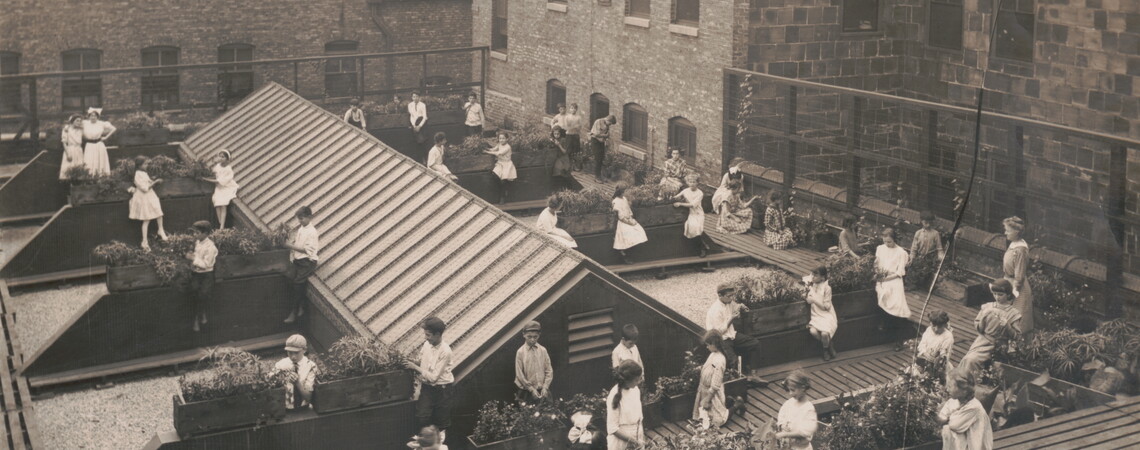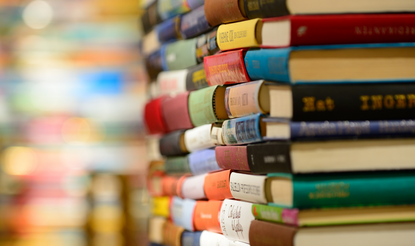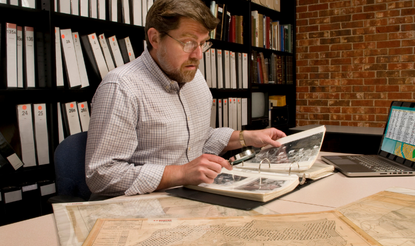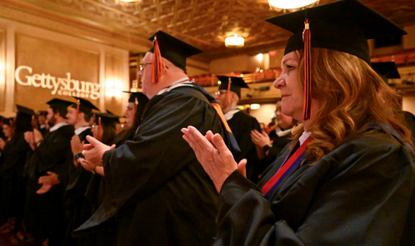Modern Women Persuading Modern Men: The Nineteenth Amendment and the Movement for Woman Suffrage, 1916–1920
by Jonathan Soffer
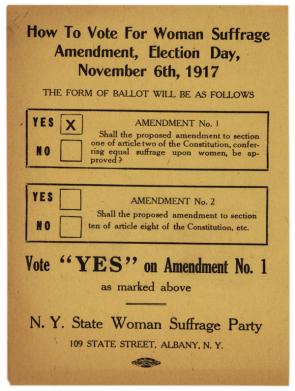 Today we take women’s suffrage for granted, but many activists of the nineteenth century, including Susan B. Anthony and Elizabeth Cady Stanton, struggled their whole lives for the vote, and did not live to see it. As a presidential campaign kicked off in September of 1916, Carrie Chapman Catt, president of the National American Woman Suffrage Association, addressed an emergency meeting of NAWSA’s Executive Council. The exhausted suffrage leaders, assembled in a sweltering room in the basement of an Atlantic City hotel, had spent the summer organizing huge but unsuccessful mass protests at both major party conventions. Despite their efforts, neither party agreed to support a federal constitutional amendment granting women the vote in 1916.
Today we take women’s suffrage for granted, but many activists of the nineteenth century, including Susan B. Anthony and Elizabeth Cady Stanton, struggled their whole lives for the vote, and did not live to see it. As a presidential campaign kicked off in September of 1916, Carrie Chapman Catt, president of the National American Woman Suffrage Association, addressed an emergency meeting of NAWSA’s Executive Council. The exhausted suffrage leaders, assembled in a sweltering room in the basement of an Atlantic City hotel, had spent the summer organizing huge but unsuccessful mass protests at both major party conventions. Despite their efforts, neither party agreed to support a federal constitutional amendment granting women the vote in 1916.
By 1916, women’s suffrage had made some progress in lightly populated western states. But it was far from certain that a federal amendment could overcome opposition from the liquor lobby, which feared that woman voters would prohibit alcohol; segregationists, who didn’t want black women to vote; and some military-preparedness advocates, such as former Secretary of War Elihu Root, who complained that if women were allowed to vote the country would never again agree to fight. Some anti-suffragists argued that allowing women to vote would be disruptive to home life, as women would take time off from their domestic duties to vote and perhaps undermine male authority by arguing about politics with their husbands and sons. At the same time, some woman suffragists, particularly the older generation active before 1900, alienated immigrants with their nativist rhetoric.
By the first decade of the twentieth century, a new generation of university-educated women started careers as municipal reformers, often through the establishment of settlement houses such as Chicago’s Hull House, based on a British model. At the 1906 convention of NAWSA, Jane Addams, the founder of Hull House, rejected the idea that citizenship should derive from men’s ability to serve as soldiers. Addams linked women’s suffrage to technological modernity and stressed that centralized urban infrastructure, such as water systems that connected the home to an outside network, had transformed municipal administration into "enlarged housekeeping." City government had expanded from cigar bars and saloons into the domestic sphere, where women, she argued, had more competence to govern than men did. The shift of the suffrage movement to grassroots organizing in major cities such as Chicago, Seattle, and San Francisco in 1910–1913, and later in New York City, directly engaged suffragists with the transnational concerns of immigrants, including an appreciation of labor conditions and, especially after the start of World War I, a sensitivity to transnational politics.
In NAWSA, suffragists had built a mass movement of approximately two million members by 1916. A board of wealthy women devoted themselves full time to the cause, creating a well-financed lobbying, advertising, and political organization. Headquartered on two floors of a Manhattan skyscraper, they deployed the latest technologies to persuade Americans of women’s right to vote and maintained transnational and intercontinental connections. They transformed NAWSA into a modern, urban, cosmopolitan lobby for women’s right to vote.
Despite opposition, suffrage organizers from different branches of the movement succeeded by building new alliances across ethnic and class divides and shifting their focus to respond to the shift of America’s population to the cities, though ultimately US entry into World War I in 1917 seems to have changed the perspective of much of the male electorate on suffrage. Some groups, such as Socialists, were inspired by the protests of more militant suffragists at the White House and a false essentialist belief that women would be more pacifistic. Others, such as German- and Irish-American men who had previously opposed women’s suffrage in large numbers but also disliked the war, may have seen a vote for suffrage as a proxy vote against the war. But some pro-war men moved toward suffrage inspired by President Wilson’s democratic rhetoric and the patriotic work of the mainstream woman suffrage movement. For example, the soldier vote went heavily pro-suffrage in 1917, vindicating NAWSA leader Carrie Chapman Catt’s decision to repudiate her own pacifism and throw her organization into patriotic war work. Catt’s pragmatism was evident even before the United States entered the conflict.
When she began her 1916 speech to the NAWSA executive committee promising to win the battle for a federal amendment, experienced Washington lobbyists like Maud Wood Park were "skeptical." But as the speech continued, Park realized that Catt was expounding a novel idea: NAWSA would pursue state campaigns as the means to acquire power in Washington to change the US Constitution. Catt boldly proposed a fifty-state-plus-federal strategy, calibrating campaigns in each state to local conditions. For example, in New York, the effort focused on a combination of sophisticated advertising and block-by-block organizing, both particularly geared to the city’s unrivalled population density and political culture. The legendary organizing effort she outlined eventually became known as "The Winning Plan."
Suffragists of both moderate and radical stripes had hoped to make the presidential election of 1916 crucial to the struggle. While NAWSA concentrated on a non-partisan approach by targeting both party conventions, Alice Paul and her faction, the National Woman’s Party (NWP), split off that year to concentrate on tactics borrowed from radical British suffrage activists (the so-called suffragettes). Pioneering non-violent direct action, Paul and the NWP circled the White House with pickets, flinging President Woodrow Wilson’s own words about democracy back in his face every time he left the White House, particularly after American entry into World War I, which they deplored, unlike the more centrist NAWSA. They particularly incensed Democrats with posters labeling the President "Kaiser Wilson."
Wilson deployed a heavy-handed crackdown against the protesters after they waved a picket sign at a delegation from Russia (which had already granted women the vote) urging the revolutionary diplomats not to ally with the United States against Germany until women got the vote in the United States. Beatings, hunger strikes, and force-feeding in jail made the women free-speech icons.
On the level of practical Washington politics, however, Alice Paul and the NWP radicals were unsuccessful. Liberal suffragists, including NAWSA chief lobbyist Maud Wood Park, complained that their demonstrations alienated many members of Congress who might otherwise have been sympathetic. And the NWP campaign to oppose the Democrats in the 1916 election in the western suffrage states fizzled. Arguably, however, it did create pressure that led Wilson to appear at the NAWSA convention in Atlantic City, in the hope of neutralizing radical suffragists by strengthening moderates. Paradoxically, the NWP’s failure may have convinced some machine politicians (and some male voters) that woman suffrage was far less politically dangerous and more likely to occur than they had thought. To avoid antagonizing potential women voters, leaders like Tammany’s Big Tim Sullivan began to shift toward the suffragists as early as 1911.
Despite Catt’s well-laid plans, when Congress declared war on Germany in April 1917, the woman suffrage amendment seemed dead. Many members of Congress, besieged by NAWSA lobbyists in Washington but fearful of the consequences of a pro-suffrage vote, hoped that the war emergency would sink the nettlesome measure forever. But a mere seven months later, a majority of New York voters unexpectedly agreed to share their franchise with nearly two million women and the amendment’s chances suddenly revived. NAWSA president Carrie Chapman Catt heralded the victory as "the Gettysburg of the woman suffrage movement."[1]
The vote for a women’s suffrage amendment to the New York State constitution in November 1917 was a huge gamble. A well-organized referendum campaign in 1915 had lost by nearly 200,000 votes, carrying only a few upstate counties. Despite a strong campaign in New York City, Manhattan had voted 59 percent to 41 percent against women’s suffrage. In 1917, however, suffrage carried all but two of New York City’s sixty-two Assembly districts, indicating a pro-suffrage shift among almost every ethnic and religious group in the city. Women could now vote in twelve states and could vote for presidential electors in Illinois. They composed roughly a quarter of the national electorate. After the 1917 election, President Wilson, who had equivocated on the issue when he addressed NAWSA in Atlantic City in 1916, prudently shifted his position unambiguously in favor of a federal suffrage amendment and actively worked toward its passage.
Catt and her lieutenants moved swiftly and decisively in Washington after the New York referendum. The House of Representatives passed the Nineteenth Amendment, endorsed by President Wilson as a "war measure," on January 10, 1918, coincidentally the same day the House of Lords gave final passage to woman suffrage in Britain. After the Senate fell just two votes short of the necessary two-thirds majority on October 1, strong campaigns by suffragists in replaced anti-suffragists David Baird (R-NJ), who did not run for reelection, and John W. Weeks (R-MA) with pro-suffrage Senators Walter Edge (D-NJ) and David I. Walsh (D-MA) in the 1918 election, paving the way for the submission of the amendment to the states on June 4, 1919. The ratification by a one-vote majority in the Tennessee legislature, on August 18, 1920, brought the Nineteenth Amendment into effect.
Many suffragists and anti-suffragists alike expected that the Nineteenth Amendment would transform the political landscape. It didn’t. At first, many women did not vote. Though turnout in the 1920 presidential election increased about 30 percent over 1916, despite a population increase of only about 2.6 percent, that was much less than the 50 percent increase that might have been expected if women voted in the same numbers as men. Only since 1980 has the proportion of women voters exceeded that of men in presidential elections. Moreover, the expectations that woman voters would show more allegiance to their gender than to their ethnicity, class, or other factors proved unfounded, despite the emergence of a small but significant "gender gap" in presidential elections after 1980. Despite these limited effects on the outcomes of elections, suffrage campaigners succeeded in establishing an enduring and global legacy—votes for women has become part of the very definition of democracy.
[1] Carrie Chapman Catt, An Address to the Legislatures of the United States (New York: National Woman Suffrage Publishing, 1919).
Jonathan Soffer is an associate professor of history at NYU Polytechnic Institute and author of Ed Koch and the Rebuilding of New York City (2010). His articles in twentieth-century political history include "All Politics Are Global: Nineteenth-Century New York History in Its Own World Wide Web," Urban History 32.2 (2005); and "Mayor Edward I. Koch and New York’s Municipal Foreign Policy" in Another Global City. Transnational Municipal Trails in the Modern Age (1850–2000) (2008), edited by Shane Ewen and Pierre Yves Saunier.
